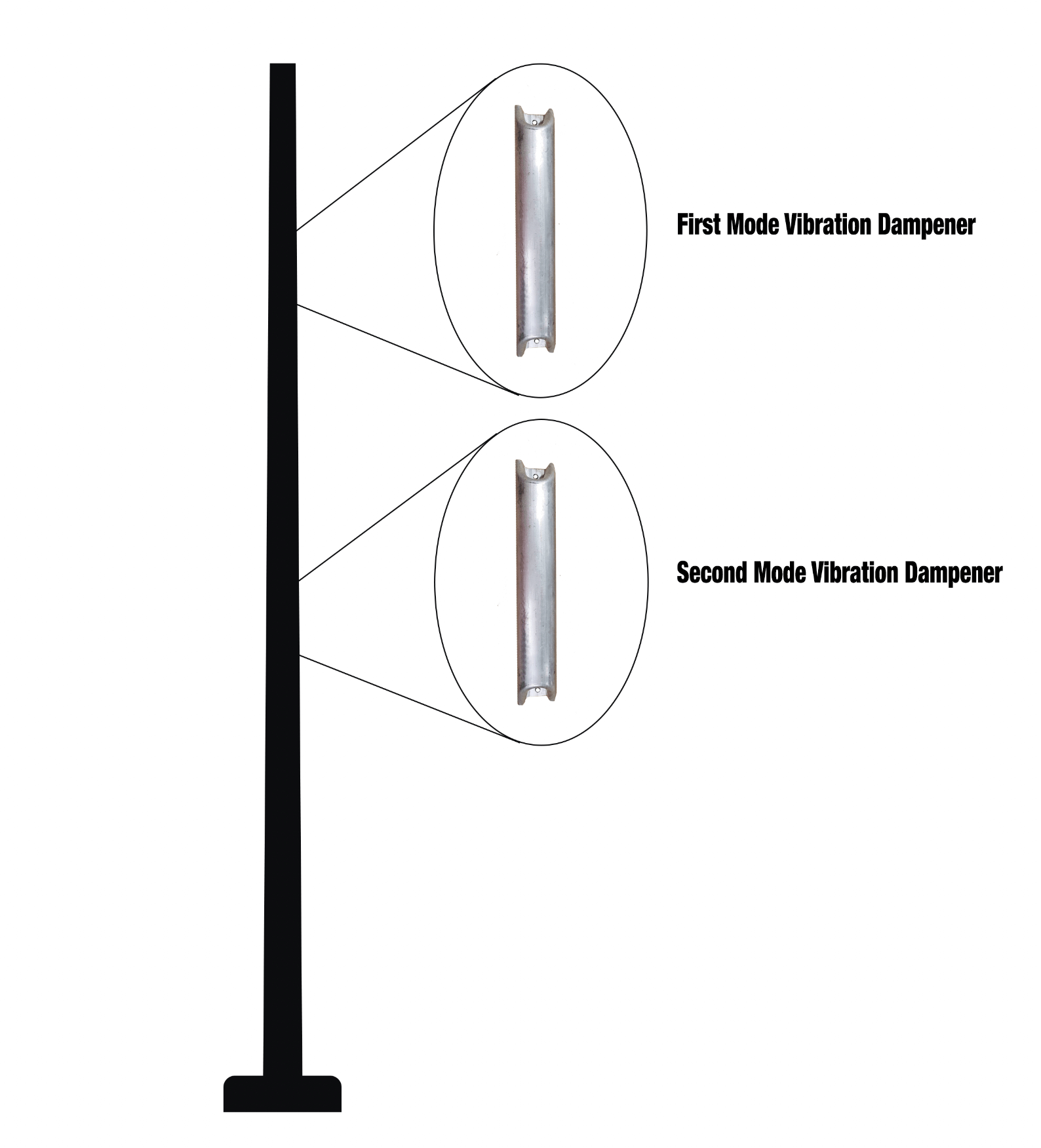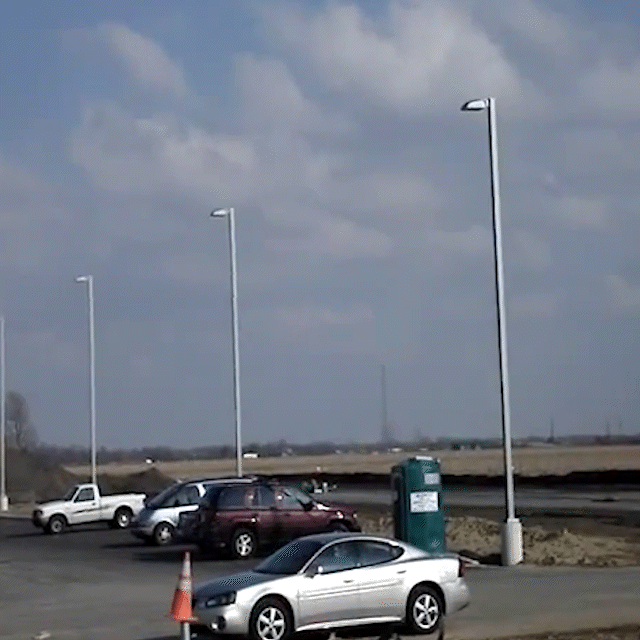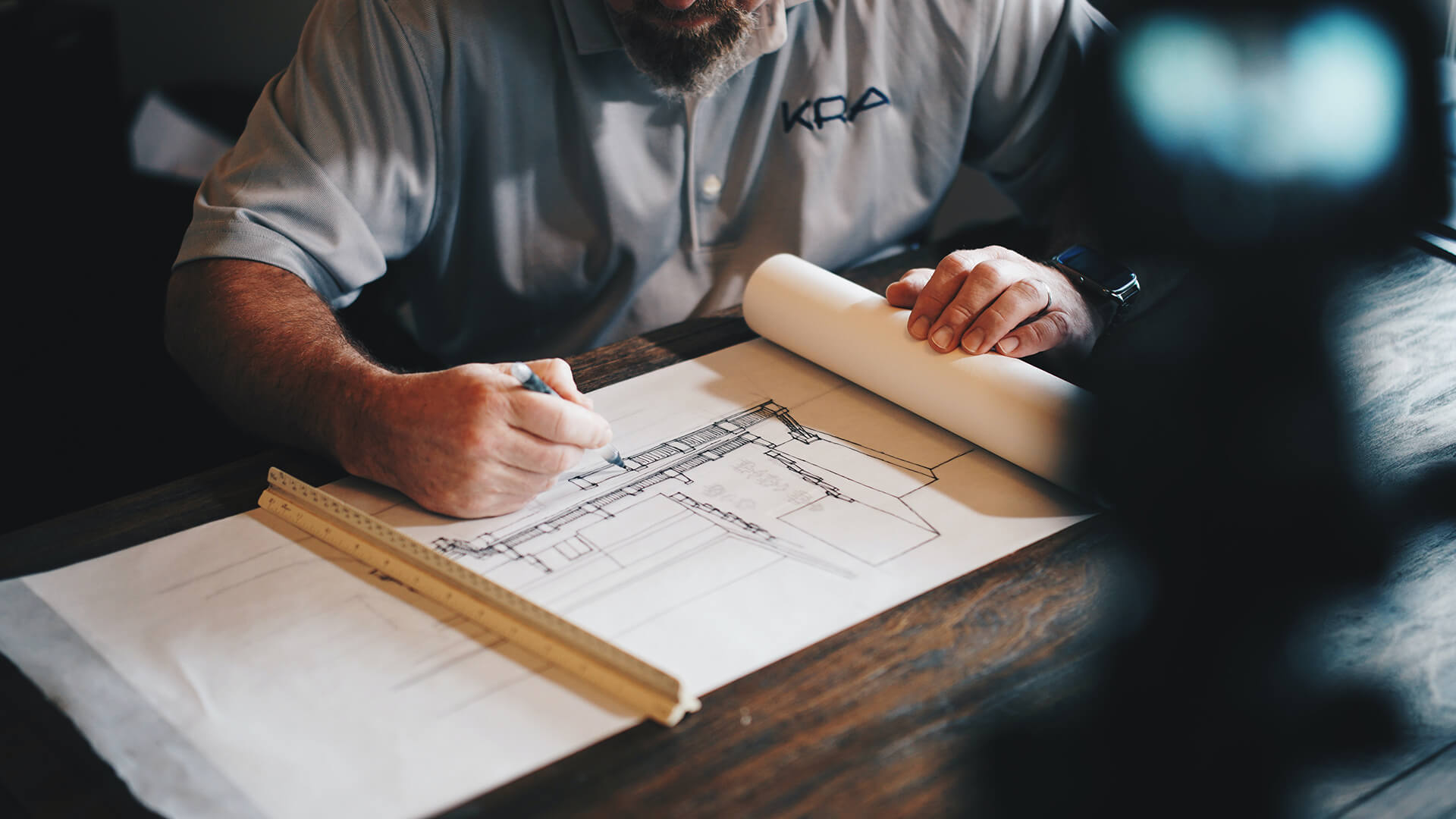
SteadyMax Pole
What makes the SteadyMax so strong and rigid?
We install two separate Vibration Dampeners in our SteadyMax Pole Vibration Suppression System that actively fight against vibration and shake.
Typically when you think of a pole shaking in the wind, it is from very high winds. However, most destructive pole vibration actually happens in much slower winds (10-30 mph). As the wind frequency nears certain speeds and directions or interacts with the local topography or nearby structures, this causes a vortex as it passes by the pole. As this vortex reaches a frequency that resonates with the pole, vibrations can occur that causes the pole to shake – either at the top of the pole or mostly in the middle of the pole.
First & Second Mode Vibration
These vibrations, which are a natural phenomenon, and are usually site-specific, are not due to any fault in the pole design, material or workmanship, can be described like this:
- First Mode Vibration: This is when you see the top of a pole shaking back & forth, similar to a diving board.
- Second Mode Vibration: Occurs around the midpoint of a pole, and acts more like a guitar string.


High Winds & Shaky Light Poles
It is not uncommon to see light poles shake and sway in the wind. For the most part its fine; most light poles are designed to do that. However that is why we strongly discourage security equipment installers and system designers not to use a repurposed light pole. A shaky pole will destroy the use of any motion based analytics and PTZ cameras. That’s why we specifically designed our poles for security camera equipment. Don’t risk your security on a repurposed light pole.
Site Frequency & Resonance
Many people attribute wind as the culprit to shaky poles but wind only accounts for some of the movement. Often a sites frequency and resonance is to blame for a poles movement. The video to the left is a good illustration of how a site’s frequency and resonance can cause a pole to vibrate and move on its own.


